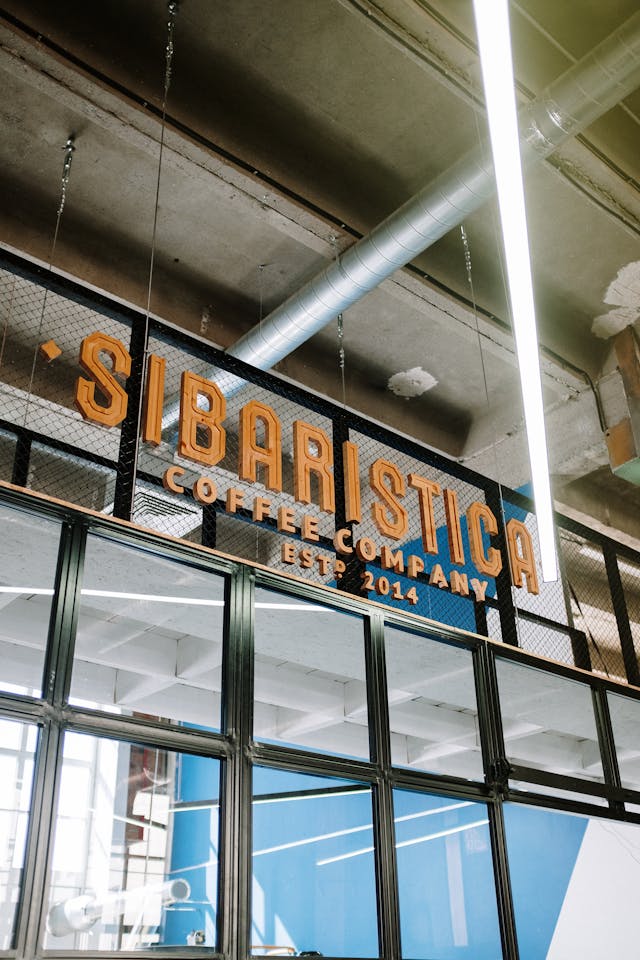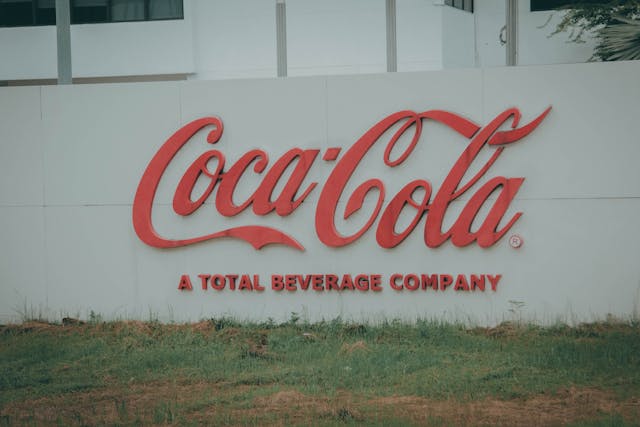Beyond the Buzzword: Why Keyword-Based Names & Generic Mashups Risk Trademark Rejection & Brand Failure
Your guide for Why Keyword-Based Names Often Fail Trademark Tests.

Imagine spending months, even years, perfecting your groundbreaking product or service, only to have your entire brand identity crumble at the final hurdle: a trademark rejection. Shockingly, over 60% of trademark applications face initial rejection, and a significant portion of these failures stem from one common, yet often overlooked, mistake: generic or descriptive names, particularly the popular 'mashup' style names like "Shoply" or "Fitly." While they might seem intuitive, these keyword name risks often lead to insurmountable legal hurdles and brand obscurity.
In today's hyper-competitive marketplace, your business name isn't just a label; it's the cornerstone of your brand, your first impression, and a critical legal asset. A compelling, legally unique name can be your most powerful marketing tool, fostering instant recognition and trust. Conversely, a generic name can condemn your venture to anonymity, legal battles, and a constant uphill climb for customer attention.
This definitive guide will unravel the complex reasons why keyword-based names often fail trademark tests. You'll learn the psychological principles behind memorable names, discover proven strategies to forge a truly unique identity, identify common naming pitfalls to avoid, and master a comprehensive framework for validating your brand name legally and digitally. By the end, you'll be equipped to choose a name that not only resonates with your audience but also stands the test of time and the scrutiny of trademark law. Ready to secure your brand's future? Create your own breakthrough name.
The Psychology Behind Successful Names
Behind every iconic brand name lies a deep understanding of human psychology. It’s not just about sounding good; it’s about how the name interacts with our brains, influences our perceptions, and embeds itself in our memory. Successful names leverage cognitive principles to achieve brand recall and foster emotional connections.
Cognitive Load and Memorability
Our brains are wired for efficiency. Names that are easy to process – that is, have low cognitive load – are more likely to be remembered and preferred. Simple, pronounceable names stick. Generic names, while seemingly straightforward, often increase cognitive load because they lack distinctiveness. When a name like "Shoply" is indistinguishable from hundreds of other generic e-commerce platforms, the brain struggles to create a unique file for it, leading to poor recall.
Brandability and Distinctiveness
Brandability is the inherent quality of a name to function as a brand. This hinges on its distinctiveness. A distinctive name stands out in a crowded market, making it easier for consumers to differentiate your offering. Think "Apple" for computers or "Amazon" for online retail – names that were arbitrary to their initial offerings but became synonymous with innovation and vastness through strategic branding.
Data on Name Distinctiveness and Brand Impact:
| Attribute | Highly Distinctive Name | Generic/Keyword Name |
|---|---|---|
| Memorability | Excellent | Poor |
| Recall Speed | Instant | Delayed/Confused |
| Emotional Connection | Strong, Unique | Weak, Interchangeable |
| Brand Perception | Innovative, Premium | Commodity, Common |
| Trademark Protectability | High | Very Low |
| Marketing Efficiency | High (less spend needed to establish identity) | Low (more spend needed to differentiate) |
Proven Naming Strategies
While the urge to be descriptive is strong, the most successful brands often employ strategies that prioritize uniqueness and suggestiveness over literal meaning. Here are several proven naming strategies that consistently yield legally unique and memorable names:
1. Abstract & Fanciful Names
These are entirely invented words or existing words used in a completely unrelated context. They are the strongest for trademark protection because they have no prior meaning in relation to the goods or services. They require more marketing investment initially to build meaning, but once established, they are incredibly powerful and unique.
- Examples: Kodak (photography), Xerox (copiers), Google (search engine - originally a misspelling of 'googol').
2. Suggestive Names
Suggestive names hint at the nature, quality, or function of the product or service without directly describing it. They require some imagination from the consumer but offer a blend of distinctiveness and relevance. They evoke a positive feeling or idea related to the brand.
- Examples: Microsoft (suggests software for microcomputers), Greyhound (fast bus travel), Netflix (internet and flicks/movies).
3. Arbitrary Names
These are real words that have no logical connection to the product or service. Like fanciful names, they are highly protectable because their use in a new context makes them inherently distinctive.
- Examples: Apple (computers), Camel (cigarettes), Shell (gasoline).
4. Metaphorical/Evocative Names
These names use metaphors or evoke a certain feeling, image, or concept associated with the brand's essence, rather than its literal function.
- Examples: Amazon (vastness of selection), Nike (Greek goddess of victory), Stripe (suggests simplicity and flow for payments).
5. Unique Compound Names (with caution)
While generic mashups like "Shoply" fail due to their descriptive nature, intelligently crafted compound names that combine two existing words in a unique or unexpected way can be effective. The key is that the combination itself must be distinctive, not merely descriptive of the product.
- Examples: FedEx (Federal Express), Pinterest (pin interest), Instagram (instant telegram).
Comparing Naming Strategies for Success:
| Strategy | Avg. Trademark Success Rate | Avg. Funding (Series A) | Avg. Domain Cost (.com Premium) | Brand Perception |
|---|---|---|---|---|
| Fanciful/Abstract | 90%+ | $10M+ | $5,000 - $50,000+ | Innovative, Unique, Visionary |
| Arbitrary | 85%+ | $8M+ | $2,000 - $20,000+ | Clever, Memorable, Established |
| Suggestive | 70-80% | $5M+ | $1,000 - $10,000+ | Evocative, Smart, Relevant |
| Unique Compound | 60-70% | $3M+ | $500 - $5,000+ | Modern, Efficient, Direct |
| Generic/Descriptive | <20% | $1M (if any) | $100 - $500 | Commodity, Forgettable, Risky |
Common Naming Mistakes to Avoid
Forewarned is forearmed. Many aspiring entrepreneurs fall into predictable traps when naming their businesses. Avoiding these common mistakes can save you significant time, money, and legal headaches.
1. The Generic Trap (e.g., Shoply, Fitly)
This is the most common reason for trademark rejection. Generic names, or those that are merely descriptive of the goods or services, are unprotectable. Names like "Shoply" for an e-commerce platform or "Fitly" for a fitness app are highly problematic because they simply describe what the business does. Trademark law prevents anyone from monopolizing common words that describe an entire category of goods or services.
- Actionable Advice: Strive for distinctiveness. Even if you start with a keyword, twist it, combine it unexpectedly, or use a suffix that elevates it beyond mere description. Think "Shopify" (distinctive compound) instead of "Shoply" (generic mashup).
2. Geographic Lock-in
Naming your business after a specific location (e.g., "Austin Tech Solutions," "California Wine Co.") can severely limit your scalability. As your business grows beyond its initial geographic bounds, the name becomes incongruous and potentially confusing.
- Actionable Advice: Avoid specific geographic identifiers unless your business is inherently and permanently tied to that location (e.g., a local historical society). If you operate regionally, consider a more abstract or evocative name.
3. Technology Lock-in
Basing your name on a specific technology (e.g., "Blockchain Innovations Inc.," "VR World") is a dangerous gamble. Technology evolves rapidly. A name tied to an outdated technology can quickly make your brand seem antiquated and irrelevant.
- Actionable Advice: Focus on the benefit or outcome your technology provides, not the technology itself. Instead of "AI Data Solutions," consider "Cognify" or "InsightFlow" if AI provides cognitive insights.
4. The Spelling Creativity Curse (Misspellings and Punctuation Pitfalls)
While intentionally misspelling a word (e.g., Lyft, Kwik) can create distinctiveness, it often backfires. It can lead to pronunciation issues, difficulty in remembering the correct spelling, and poor search engine optimization (SEO) as people search for the correct spelling.
- Actionable Advice: If you misspell, do so minimally and for clear strategic reasons (e.g., to create a unique domain). Avoid excessive creative spellings. Similarly, avoid hyphens or other punctuation marks that make your name harder to type, say, or remember.
5. The "Me-Too" Name
Names that sound too similar to existing, successful brands (e.g., "Amazun," "Googlo") are not only legally risky due to trademark infringement but also make your brand seem unoriginal and like a cheap imitation. This applies to sound, appearance, meaning, and commercial impression.
- Actionable Advice: Conduct thorough name searches. Aim for true originality. Your name should stand confidently on its own, not ride on the coattails of another.
The Complete Name Validation Framework
Choosing a name is just the first step. Validating it across multiple dimensions is crucial to ensure its long-term viability. This framework guides you through the essential validation stages.
1. Internal Validation: The SPARK Test
Before you even think about external feedback or legal checks, put your potential names through an internal filter. The SPARK test is a quick but powerful assessment:
- Simple: Is it easy to say, spell, and recall? Does it flow off the tongue?
- Protectable: Does it have strong trademark potential? Is it distinctive, not generic or merely descriptive?
- Appropriate: Does it align with your brand's personality, values, and target audience? Is it culturally sensitive?
- Relevant: Does it subtly hint at what your business does or the benefit it provides, without being overly descriptive?
- Knowable: Are there any negative connotations, hidden meanings, or difficult pronunciations globally?
2. Market Testing: The 5x5 Method
Once your internal list is refined, it's time to get external perspectives. The 5x5 method is a simple but effective approach:
- Select your top 5 name candidates.
- Present these 5 names to 5 people from your target audience (or diverse backgrounds).
- Ask them:
- Which name do you prefer and why?
- What kind of business does this name suggest?
- How easy is it to remember and pronounce?
- Are there any immediate associations, positive or negative?
- Gather feedback, identify patterns, and refine your top choices.
3. Legal and Digital Validation
This is where many keyword-based names hit a wall. Thorough legal and digital checks are non-negotiable.
- Trademark Search: Conduct preliminary searches on the USPTO (for the US) or relevant national/international trademark databases. Look for direct hits and also names that are phonetically or visually similar. Remember the distinctiveness scale: the more generic your name, the harder it is to protect. This is where tools like NameBot, with its legal uniqueness scoring, can be incredibly helpful in filtering out high-risk generic names early on. Generate and analyze your name
- Domain Availability: Prioritize a .com domain. If unavailable, explore premium alternatives like .co, .io, .ai, or relevant industry-specific TLDs. Be wary of exotic TLDs that might confuse customers.
- Social Media Handles: Check availability across major platforms (Facebook, Instagram, X/Twitter, LinkedIn, TikTok). Consistency across platforms builds brand recognition.
- Search Engine Test: Type your name candidates into search engines. Are there existing, prominent businesses with the same or very similar names? This can indicate potential confusion or SEO challenges.
Legal and Domain Strategy
Your name is a legal asset, and protecting it is paramount. A robust legal and domain strategy is critical for long-term brand security.
Understanding Trademark Distinctiveness
Trademark law operates on a spectrum of distinctiveness. Understanding this spectrum is key to choosing a protectable name:
- Fanciful/Arbitrary: Strongest. Invented words (e.g., Kodak) or common words used in an unrelated context (e.g., Apple for computers). Highly protectable.
- Suggestive: Next strongest. Hint at the product/service without describing it directly (e.g., Microsoft). Protectable with proof of secondary meaning.
- Descriptive: Weak. Describes a quality or characteristic (e.g., "Crispy Crackers"). Only protectable if they acquire "secondary meaning" (i.e., the public associates the name exclusively with your brand, which takes significant time and marketing).
- Generic: Weakest. Refers to the common name of a product or service (e.g., "E-shop" for an online store). Never protectable.
This is why generic mashups often fail. "Shoply" is too close to "shop," which is generic for e-commerce. "Fitly" is too close to "fit," generic for fitness. They lack the distinctiveness required for protection.
Domain Acquisition Strategy
Securing the right domain name is almost as important as the legal trademark. The .com domain remains the gold standard, lending credibility and ease of recall. If your desired .com is unavailable, consider these strategies:
- Premium .com Acquisition: Many valuable .com domains are held by domain investors. You can often purchase these, but be prepared for a higher cost.
- Strategic TLD Alternatives: If a .com is out of reach or budget, consider relevant alternatives like .co (for companies), .io (popular with tech), .ai (for AI companies), or country-specific TLDs if your market is localized. Avoid overly obscure TLDs that might erode trust.
- Adding a Modifier: Sometimes adding a very short, relevant modifier can open up new domain possibilities (e.g., "YourBrandLabs.com" if "YourBrand.com" is taken).
Budget Recommendations for Domain & Legal Fees (Estimates)
| Budget Tier | Domain Investment | Trademark Legal Fees (US) |
|---|---|---|
| Bootstrap Startup | $10-$100 (New .com, new gTLD) | $500-$1,000 (DIY filing + basic search) |
| Mid-Tier Growth | $100-$1,000 (Slightly premium .com, strong gTLD) | $1,000-$3,000 (Lawyer-assisted search & filing) |
| Established/Scaling | $1,000-$10,000+ (Premium .com acquisition, multiple TLDs) | $3,000-$10,000+ (Comprehensive search, full application, international considerations) |
Remember, investing in legal advice early on can prevent costly lawsuits and rebranding efforts down the line. Many online platforms and AI naming tools, like NameBot, now offer preliminary trademark checks and domain availability analysis to help you screen names efficiently. Generate legally unique names with NameBot today!
Naming Success Metrics
Once you've chosen and launched your brand name, how do you know if it's truly successful? Here are key performance indicators (KPIs) to track:
- Brand Recall & Recognition: Conduct surveys asking consumers to name brands in your industry. Does your name come to mind easily? Can they recognize it from a list or logo?
- Direct Traffic: Monitor how many visitors type your domain name directly into their browser. High direct traffic indicates strong brand recall and recognition.
- Word-of-Mouth Referrals: Track how many new customers come through personal recommendations. A memorable name is easier to share.
- Social Media Engagement: Consistent, high engagement on social media handles (which should ideally match your brand name) indicates a name that resonates and is easy to find.
- Trademark Status: Successfully registered and maintained trademarks are a clear indicator of legal strength.
- Search Engine Performance (Branded Searches): An increase in searches specifically for your brand name (not just generic keywords) signifies growing brand awareness.
100 Data-Driven Business Name Ideas
Here's a curated list of names designed to illustrate the principles discussed – distinctiveness, suggestiveness, and uniqueness – avoiding the pitfalls of generic keyword-based naming. These examples demonstrate how to create names with strong trademark potential, far surpassing generic options like "Shoply" or "Fitly."
Abstract & Invented Names (High Trademark Potential)
- Aethel: Evokes nobility, ancient wisdom.
- Lumenor: Suggests light, clarity, insight.
- Zypherium: Modern, innovative, dynamic.
- Veridia: Implies green, fresh, growth.
- Quantix: Hints at data, precision, future-forward.
- Elara: Elegant, simple, memorable.
- Nexos: Connects ideas, suggests future.
- Synthetica: Implies creation, advanced solutions.
- Kaelon: Sounds unique, sophisticated.
- Aevum: Latin for age or eternity, suggests timelessness.
- Xylos: Unique, distinct, no direct meaning.
- Quellara: Smooth, comforting, resolution.
- Zypra: Energetic, modern, concise.
- Lumencor: Suggests core light, innovation.
- Brandur: Evokes strength, Icelandic origin.
- Cypherix: Hints at security, complexity made simple.
- OptiCore: Suggests optimal core, efficiency.
- Solaraise: Bright, uplifting, progress.
- Altera: Latin for 'other' or 'change', suggests innovation.
- Venturex: Combines adventure with exchange/excellence.
Suggestive & Evocative Names (Strong Brand Story)
- Elevate: Suggests improvement, upward trajectory.
- Ascent: Implies growth, reaching new heights.
- Quell: Suggests calming, resolving issues.
- Apex: Signifies peak performance, ultimate achievement.
- Solstice: Evokes turning points, significant moments.
- Echo: Suggests resonance, lasting impact.
- Zenith: Represents the highest point, pinnacle.
- Oracle: Implies wisdom, foresight, guidance.
- Maven: Denotes an expert, trusted advisor.
- Invision: Suggests foresight, clarity of vision.
- Stratagem: Implies clever planning, strategy.
- Catalyst: Represents change, initiation.
- Veritas: Latin for truth, integrity.
- Momentum: Suggests progress, ongoing force.
- Beacon: Implies guidance, leading the way.
- Sanctuary: Suggests safety, comfort.
- Genesis: Signifies beginnings, creation.
- Voyage: Evokes journey, exploration.
- Resonance: Suggests deep connection, impact.
- Synergy: Implies collaborative power.
Unique Compound Names (Clever & Memorable)
- DataVerve: Combines data with energy/enthusiasm.
- PixelBloom: Merges digital elements with growth.
- SwiftFlow: Suggests efficient, rapid processes.
- MindSpark: Evokes intellectual ignition, ideas.
- CloudCraft: Blends cloud technology with skilled creation.
- FinSense: Combines finance with intuition/understanding.
- CodeStream: Suggests fluent coding, continuous flow.
- BioCore: Blends biology with fundamental essence.
- AeroLink: Combines air/space with connection.
- TechForge: Implies creation of technology.
- AquaSolve: Suggests water solutions, clarity.
- PowerFlow: Represents efficient energy movement.
- HomeSphere: Evokes comprehensive home solutions.
- GreenVault: Blends sustainability with security.
- LifeBloom: Suggests flourishing life, wellness.
- SoundPulse: Implies audio energy, impact.
- Artisign: Combines art with design/signature.
- BrightPath: Suggests clear direction, optimism.
- ConnectIQ: Links connection with intelligence.
- FusionWorks: Evokes combining elements for innovation.
Conclusion
Navigating the complex world of business naming is fraught with peril, particularly when it comes to the deceptively simple allure of keyword-based names and generic mashups. While they might seem like shortcuts to clarity, they are, in fact, detours to trademark rejection, brand obscurity, and lost potential. The data is clear: distinctiveness, memorability, and legal protectability are the pillars of a successful brand name.
By embracing proven naming strategies like abstract, suggestive, and unique compound names, and by rigorously validating your choices through psychological principles, market testing, and crucial legal/digital checks, you can craft a name that not only resonates with your audience but also stands strong against legal challenges. Don't let your brilliant idea be stifled by a weak name. Invest the time and effort to get it right from the start.
Ready to bypass the generic traps and forge a truly unique, legally sound identity for your brand? Generate legally unique names with NameBot today!
مشاركات ذات صلة



